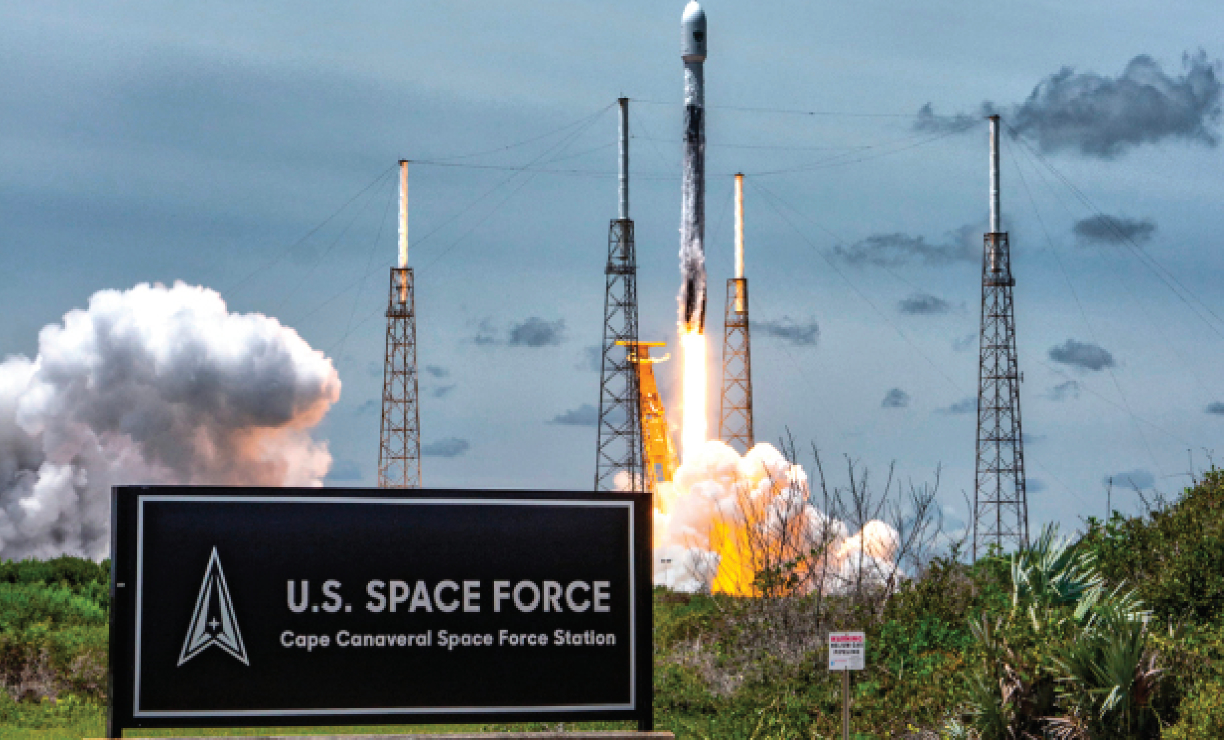“Accelerate change, or lose.” That was the unofficial mantra of the most recent AFA Warfare Symposium, hearkening back to a 2020 strategic memorandum written by U.S. Air Force’s Chief of Staff Gen. Charles Q. Brown. The themes of embracing innovation, modernization, and digital transformation were hard to miss, as top officials from the U.S. Air Force and U.S. Space Force delivered their visions on how to protect and defend American warfighting capabilities in the air and space domains.

Throughout the symposium, the space domain took center stage in panel discussions about the U.S. Space Force’s plan to move forward in modernizing and digitally transforming its network architecture and systems, in order to establish freedom of action in the space domain, while simultaneously being able to deny the same freedom to our adversaries.
In one specific session, “Airmen and Guardians in the Fight,” Gen. John “Jay” Raymond, Chief of Space Operations at the U.S. Space Force, outlined the requirements and measures that would need to be taken to accelerate the change that will lead to U.S. superiority in the space domain.
According to Gen. Raymond, the keys to moving with and innovating at the speed of the ever-changing space race include leveraging the “explosion” of innovation that is coming out of the commercial industry and deploying a new, resilient space architecture that would put the U.S. in an advantageous position over its adversaries.
Commercial industry would strengthen defense industrial base According to Gen. Raymond, to deliver advanced, military relevant capabilities at speed, the U.S. Department of Defense (DoD) must begin strengthening its ties with the commercial industry and relying more on the technological advancements and innovations that are coming out of the private sector.
“I think there’s great advantage with commercial industry,” said Gen. Raymond. “There’s been an explosion of business going on…We want to be able to leverage them.”
Quoting last November’s State of the Space Industrial Base 2021 report, Gen. Raymond stated that the industrial base is “tactically strong but strategically fragile.”

To combat the “fragile” state of the space domain’s industrial base, he believes that the DoD should embrace the opportunities the private sector presents to the military and expand the industrial base to more innovative players. Doing so would provide the modern and effective systems, capabilities, and approaches that are required in delivering space superiority for the U.S.
Gen. Raymond recognizes that the role of the space domain has drastically changed since he began his career. Previously viewed as a benign arena, he explained that space is now “the most dynamic and complex security environment in three generations.”
Near-peer competitors like China have spent more than three decades building a space warfighting architecture that has the same advantageous capabilities that the U.S. employs today. “They built it for a purpose,” Gen. Raymond emphasized. “That, coupled with the spectrum of threats that we’re seeing from low-end, reversible jamming to high-end kinetic destruction, it’s a different domain. And it requires a different approach.”
The private sector has already created the solutions and capabilities the military needs to protect and secure American assets in space. With near-peer competitors being close to outpacing U.S. capabilities in the domain, relying on the commercial industry would better prepare and position the military with solutions and systems that would defend against the innovations and advancements of our adversaries.
The path to a resilient space architecture In the past few months, Gen. Raymond has expressed that 2022 is going to be the year of the resilient space architecture for the Space Force — a sentiment he also echoed at the AFA panel. “The big focus area for us this year, and for the next decade, is shifting our space architecture to a new, more resilient architecture by the design of the force,” said Gen. Raymond.
“The capabilities that we have in space are exquisite. They’re small in numbers, and they’re not easily defendable. Our joint coalition forces require the space capabilities that we provide. They can’t be treated as a given anymore. We’re going to continue to provide those capabilities and do so in a way that’s more resilient.”
According to Gen. Raymond, warfighting is on the precipice of a major evolution. He emphasized that the U.S. is pitted against adversaries that have — if deterrence were to fail — incredible space capabilities for their own use. “As countries are developing capabilities to deny us our access to space, we can’t take it for granted,” said Gen. Raymond. “And you got to be able to protect and defend it.”
When the DoD invests time and money on the in-house design, testing, and deployment of limited, stovepipe solutions, adversaries who leverage their own nation’s commercial sector have the chance to surpass and deny the U.S. access to its systems and capabilities. Calling back to the need for commercial industry innovation and input, the federal government does not need to reinvent the wheel. The path to a resilient space architecture begins with turning to the existing capabilities and systems that private industry has already created.
Industry is waiting in the wings
The conversation around commercial space and satellite industries’ roles in supporting military innovation in the space domain is not just limited to Space Force leadership. In fact, Congress added a call in FY22’s National Defense Authorization Act (NDAA) that requires the DoD to report on its utilization of COMSATCOM services from non-geostationary orbits (NGSO) for delivering connectivity to the warfighter.
Though the NDAA directive doesn’t necessarily signal a heavier reliance on space industry leaders, it does acknowledge the unmistakably growing role that industry is playing in the defense and security of space as a warfighting domain. In a recent interview with the Government Satellite Report, Gen. Curtis Michael Scaparrotti — a retired U.S. Army four-star general who served as the Commander of United States European Command — discussed how the innovation the commercial satellite industry is critical in building resilient network architectures.

“Commercial satellite providers are the engines of innovation, providing capabilities today and on the horizon that are quite promising,” said Gen. Scaparrotti. Speaking specifically about commercial satellite providers, Gen. Scaparrotti explained, “They are developing capabilities that reduce vulnerabilities and increase the resiliency of networks by positioning, numbers, and capabilities of systems, intra- satellite capabilities, and the flexibility of ground stations.”
Amit Katti, Principal Engineer at SES GS, shared Gen. Scaparrotti’s opinion in a recent interview about Hydra — SES GS’ new Common Operational Picture platform. “An integrated [COMSATCOM and MILSATCOM] architecture allows the military to leverage the investments the commercial sector has made in innovative technologies,” said Katti. “Advanced commercial technologies have added benefits, including increased resilience to interference, jamming, or environmental effects, far more rapid resource allocation, improved situational awareness, and increased bandwidth utilization efficiencies.”
For additional information on how COMSATCOM capabilities can help make the military’s satellite architecture more resilient and capable, select this direct link to download a complimentary copy of the whitepaper, “O3b mPOWER for U.S. Government Missions.” This article first on GovSat and is reprinted with permission from SES GS and Government Satellite Report.

